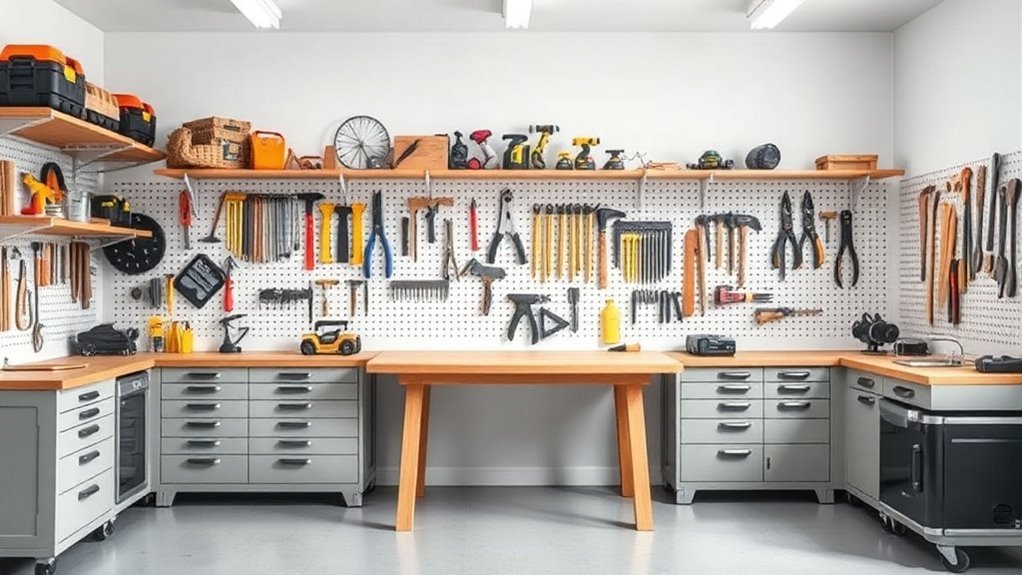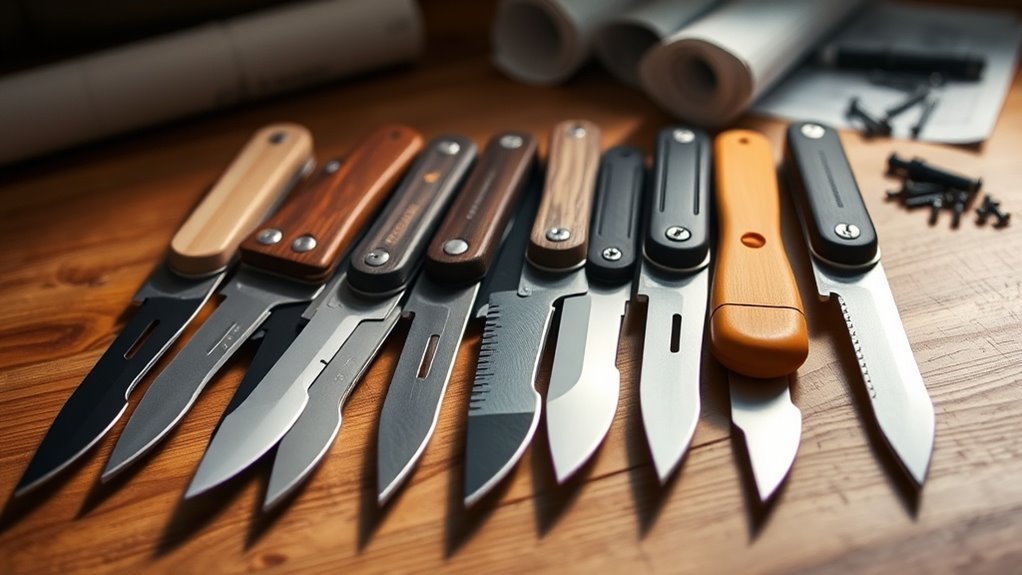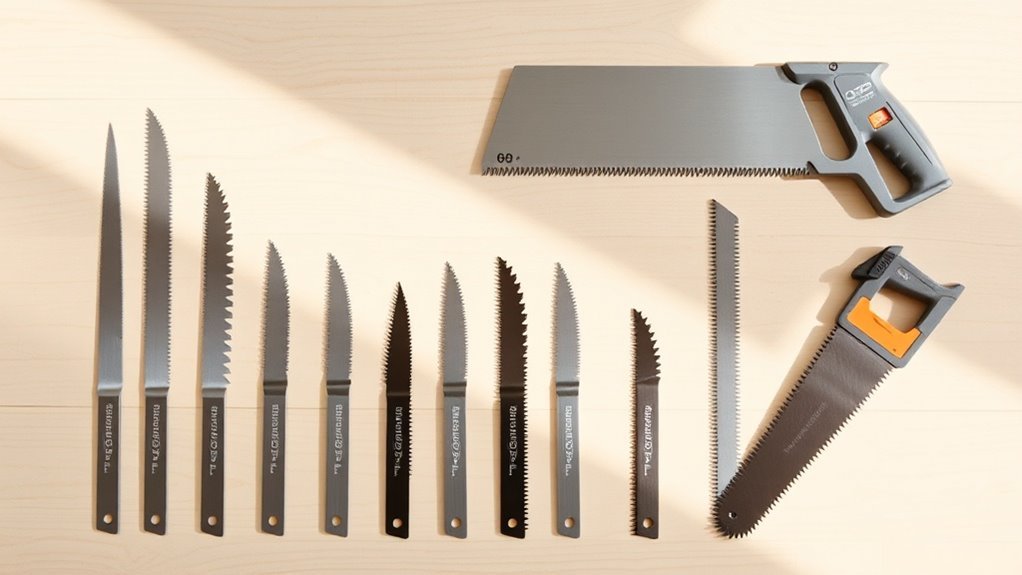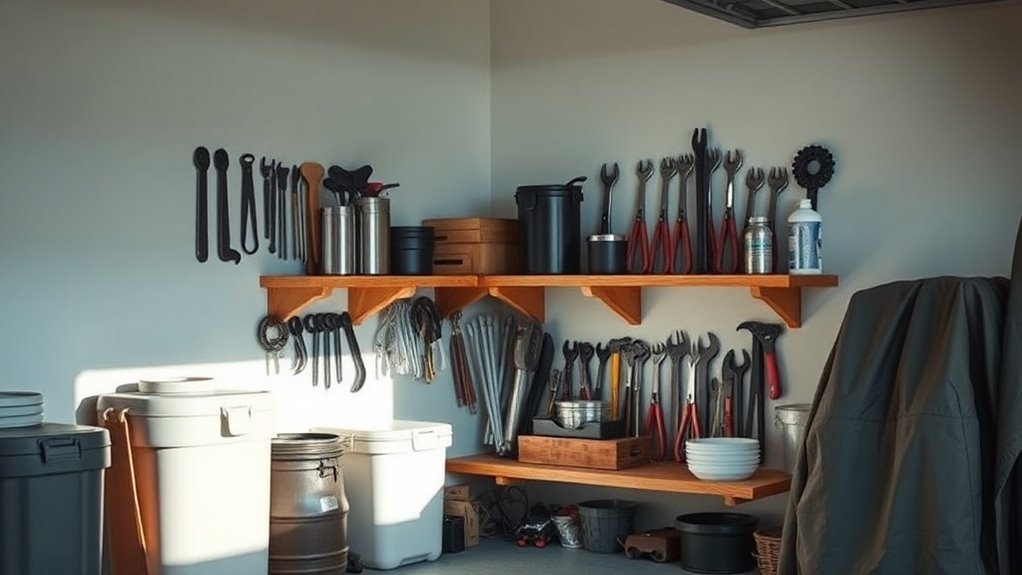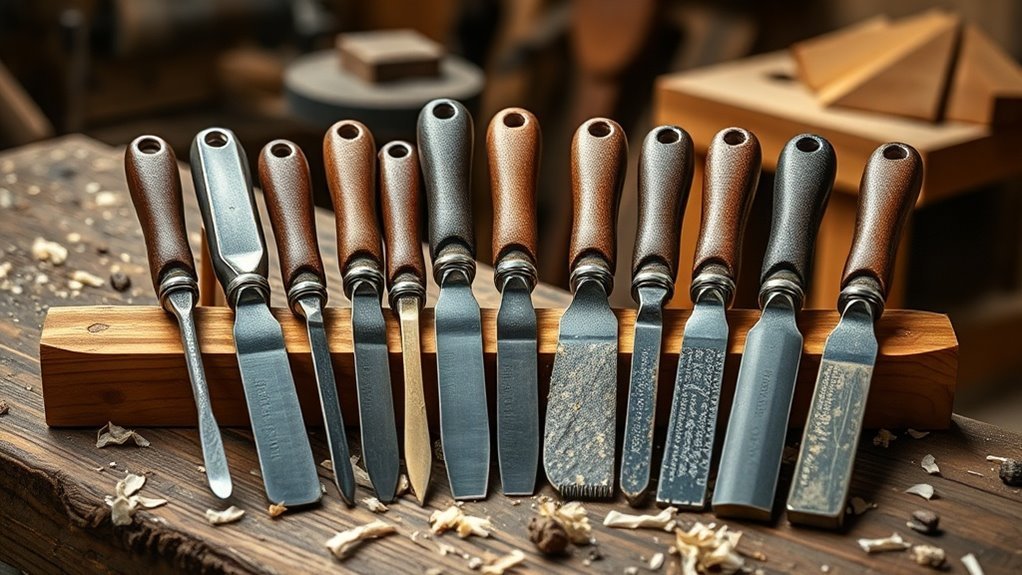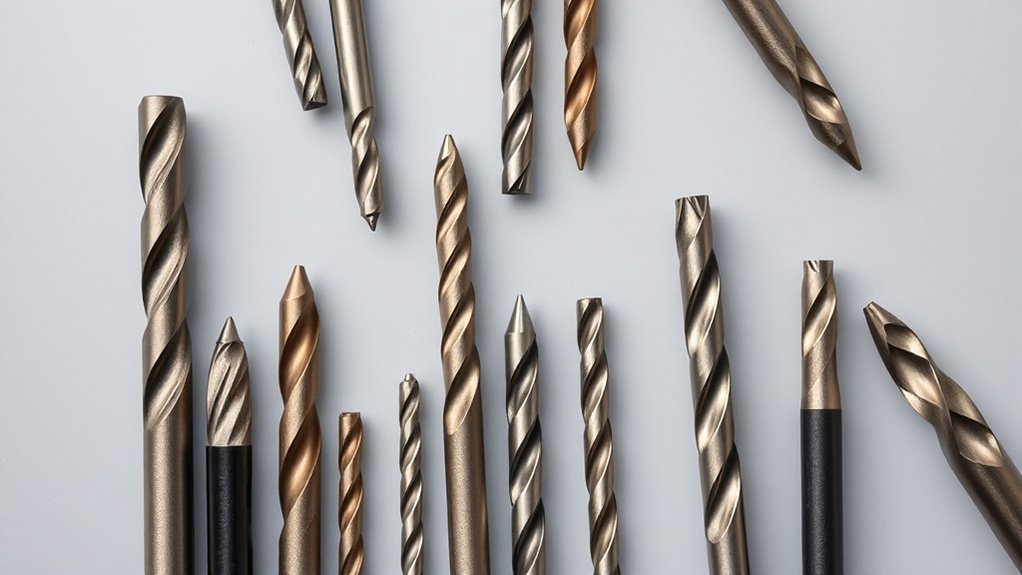Material Science Behind Durable Hand Tools
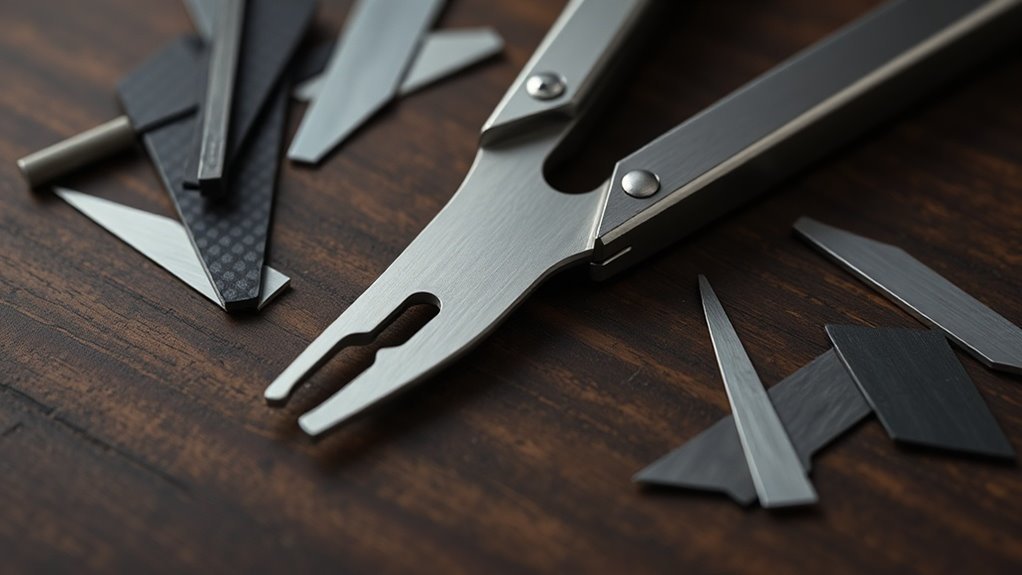
The material science behind durable hand tools combines advanced metals and composites, ensuring strength and longevity. High-performance metals like stainless steel and titanium provide impressive durability, while composites like fiberglass balance lightweight properties with toughness. Innovations in ergonomic design and smart technologies enhance usability and safety. Testing for factors like corrosion and fatigue guarantees that tools can withstand rigorous use. Discover more about how these materials and designs transform the effectiveness of hand tools.
Key Takeaways
- High-carbon steel provides strength and longevity, making it a preferred choice for durable hand tool blades and cutting edges.
- Alloyed metals improve wear and corrosion resistance, extending the lifespan of tools in demanding environments.
- Advanced composites like fiberglass reduce weight and enhance ergonomics, decreasing hand fatigue during prolonged use.
- Innovative designs incorporate magnetic features and smart technologies, increasing functionality and safety for users.
- Rigorous testing methods, including impact and corrosion testing, ensure tools meet durability standards and can withstand harsh conditions.
The Evolution of Hand Tool Materials
As hand tools have evolved, so too have the materials that make them effective and durable. In the past, you might’ve relied on simple wood and stone, but advancements in material science have transformed your options.
Today, tools often feature high-carbon steel, known for its strength and longevity. You may have noticed tools incorporating alloyed metals, which enhance performance by increasing resistance to wear and corrosion.
Modern hand tools often utilize synthetic materials, like fiberglass or advanced plastics, which not only reduce weight but also improve grip and safety. Each upgrade in material contributes to your tools lasting longer and performing better, allowing you to tackle any project with confidence. The timeless appeal of hand tools showcases their unique advantages in precision and craftsmanship.
Embracing these innovations helps guarantee your hand tools meet the demands of today’s tasks.
Key Properties of High-Performance Metals
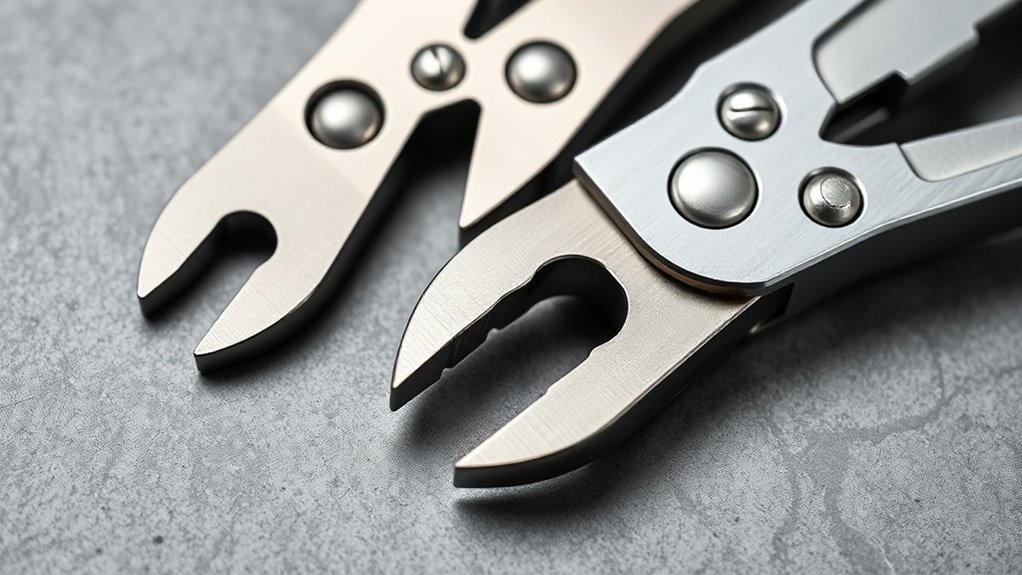
High-performance metals are essential for creating tools that withstand rigorous use and offer exceptional durability.
These metals, like stainless steel and titanium, possess remarkable strength-to-weight ratios, making them ideal for demanding applications. You’ll appreciate their corrosion resistance, which guarantees longevity even in harsh environments.
Stainless steel and titanium offer unmatched strength-to-weight ratios and corrosion resistance, perfect for enduring harsh environments.
High-performance metals also exhibit excellent toughness, enabling them to absorb shock without breaking. Additionally, their ability to maintain a sharp edge aids in precision work, tangibly improving your experience.
Moreover, you’ll find that their thermal stability allows them to endure high temperatures without losing structural integrity. Additionally, the use of brushless motors in power tools enhances overall performance, ensuring that tools coupled with high-performance metals operate efficiently and reliably.
The Role of Composites in Tool Manufacturing
While high-performance metals provide exceptional attributes for hand tools, composites are increasingly making their mark in tool manufacturing.
You’ll find that composite materials, such as fiberglass and carbon fiber, offer a great balance of strength and lightweight properties. These materials can reduce hand fatigue during prolonged use while delivering durability and resistance to environmental wear.
Composites also allow for innovative shapes and designs that can enhance tool ergonomics and functionality. Additionally, they’re often more cost-effective than traditional metals, enabling manufacturers to produce tools that cater to a wider audience.
As tools evolve in response to changing needs and challenges, choosing composite tools can lead to a more versatile and enduring toolkit, enhancing both performance and efficiency in your projects.
Innovations in Tool Design and Engineering
Innovative tool design and engineering are transforming the way we approach everyday tasks. You’re likely noticing features that enhance functionality, comfort, and efficiency. From ergonomic handles to multi-functional designs, these advances make your work easier. Additionally, selecting the right utility knife type can significantly impact the efficiency and safety of your DIY projects.
| Feature | Benefit | Example |
|---|---|---|
| Ergonomic Grip | Reduces hand fatigue | Padded screwdrivers |
| Multi-functionality | Consolidates tools | Adjustable wrenches |
| Lightweight Materials | Increases portability | Carbon fiber pliers |
| Magnetic Features | Prevents dropping tools | Magnetic drill bits |
| Smart Technologies | Enhances precision and safety | Digital torque wrenches |
As you explore these innovations, you’re bound to find tools that truly support your needs and improve your craftsmanship!
Testing and Quality Assurance for Durability
Durability is essential when it comes to hand tools, and rigorous testing guarantees that they can withstand the demands of frequent use.
To guarantee quality and longevity, manufacturers implement various testing methods during the production process. You’ll often see the following procedures in action:
- Impact testing to measure resistance to sudden forces
- Fatigue testing to evaluate performance after repeated use
- Corrosion testing to check resistance against rust and wear
- Thermal testing for performance under extreme temperatures
- Load testing to confirm tools can handle specified weight limits
These evaluations help identify any weaknesses before tools hit the market, guaranteeing you receive reliable and durable tools for your projects. Additionally, wearing appropriate safety gear during testing is crucial to protect personnel and ensure safe handling of tools throughout the process.
Questions
What Are Some Common Hand Tool Maintenance Practices?
You should regularly clean your tools, oil moving parts, check for rust, and sharpen edges. Store them properly to avoid damage. Inspect for any signs of wear, and repair or replace parts as needed.
How Do Hand Tools Compare to Power Tools in Durability?
Did you know hand tools can last up to 50 years with proper care? Generally, they’re seen as more durable than power tools due to simpler construction and fewer electronic components prone to wear and tear.
What Is the Environmental Impact of Hand Tool Manufacturing?
Hand tool manufacturing can lead to resource depletion and pollution, but they often require fewer materials than power tools. Still, you should consider sourcing from eco-friendly brands that prioritize sustainable practices in their production.
Are There Any Ergonomic Considerations in Hand Tool Design?
Yes, there are important ergonomic considerations in hand tool design. It’s crucial to guarantee tools fit comfortably in your hand, reduce strain during use, and allow for efficient movement, ultimately enhancing your productivity and safety.
How Do Different Climates Affect Hand Tool Performance?
Climates can critically compromise your hand tools’ capacity. Cold conditions can cause components to contract, while heat may lead to expansion. Humidity, too, affects metal’s might, possibly promoting premature corrosion and impacting performance considerably.
Conclusion
In the world of hand tools, you’ve just revealed the secrets to eternal durability! With cutting-edge materials like superhuman metals and magical composites, your toolbox is practically invincible. Innovations in design are so groundbreaking, they make time travel look like child’s play! Trust that the rigorous testing guarantees every tool is ready to go to war against wear and tear. So, gear up, wield your newfound knowledge, and conquer any DIY project like the superhero you truly are!

